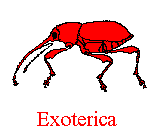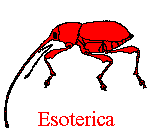Like Edith Wharton (previous post), Machado de Assis has what looks very like a mythological blunder in his very first short story (first collected, in his case), “Miss Dollar”. The very handsome and affordable new translation of the Collected Stories translated by Margaret Jull Costa and Robin Patterson (Liveright, 2018) includes these remarks about a beautiful widow very reluctant to remarry (13-14):
“She wants to remain faithful unto the grave, an Artemis for our own age.”
Unconvinced by this reference to Artemis, Andrade smiled at his friend’s remark, . . .
* * * * *
This quote had the effect of silencing Andrade, who believed about as much in constancy as he did in Artemises, . . .
Of course, the classical model for inconsolable widows was not the virgin goddess Artemis but Artemisia, specifically Artemisia II of Caria, who built one of the Seven Wonders of the World, the Mausoleum, as a tomb for her husband (and brother) Mausolus. Except for helpful stress-accents, the two names are the same in Portuguese: Ártemis and Artemísia. (Being ignorant of Portuguese, I would not have been able to check this easily until the last few years, since dictionaries usually omit proper names. Now I can just look up Artemis and Artemisia – the queen, not the generic name of mugwort, wormwood, and sagebrush, which comes up first – on Wikipedia, and click on Languages / Português in the left margin to see how the articles are titled in Portuguese.)
Though I may be wrong, the apparent blunder does not seem to be the translators’. Machado de Assis’ Obra Completa is out of copyright (he died 110 years ago last Saturday) and on-line at a Brazilian government URL (machado.mec.gov.br/). The text of “Miss Dollar” there (click on ‘Conto’, then ‘Contos Fluminenses’) reads ‘Artemisa’ or ‘Artemisas’ in all three places. Could this be an earlier spelling of Artemis or Artemisia? That would be awfully confusing: it looks more like a conflation of the two, falling between two stools, as it were. Did Machado de Assis himself, or his copy editors, proofreaders, or typographers drop an I and an accent to turn Artemísia into Artemisa? That is a question only an expert on Brazilian Portuguese and the works of Machado de Assis can answer. However, he must have meant the woman whose English name is Artemisia, not Artemis, so the translation is definitely wrong.
Perhaps I should add that I’ve been very impressed by the quality of the stories I’ve read (four so far) and the translation reads very well, though I’m obviously in no position to judge its accuracy except on this one tiny point. I would have liked footnotes for some of the geographical and literary allusions, but there was hardly room for them: the book is already xxv + 931 pages. Perhaps someone could put together a companion website, with contemporary maps, explanations of what the named streets and neighborhoods imply socially and economically, identification of now-forgotten (at least outside Brazil) authors, and so on. (If such a site already exists in Portuguese, a translation would be very much appreciated by readers of the new Collected Stories.) I would be glad to help with the frequent classical references and allusions.







Dissertation Now On-Line
The University of Virginia library has (with my permission) placed my dissertation, “Problems of unity and design in Propertius II” (1990) on-line. It’s a bit half-baked, but I still think my conclusions are sound. Should you read it? The best way to judge is to start with Chapter 2, on 2.29, of which S. J. Heyworth writes (Cynthia, 238): “The two sections [of 2.29] are set up as a contrasting pair, brought out well by Hendry 1990: night/day (for which one may compare Ovid, amores 1.5/6); out of doors/at Cynthia’s house; narrative addressed to Cynthia/3rd person narrative about Cynthia; pleasant fantasy/cruel reality; but such antitheses can function at least as well if we separate the parts.”
For the abstract and a link to the PDF, click here. Chapter 2 does not discuss my conjecture on 2.29.28 (qua for quae, not mentioned in Cynthia, but included in the apparatus of the OCT), which I had not yet devised.